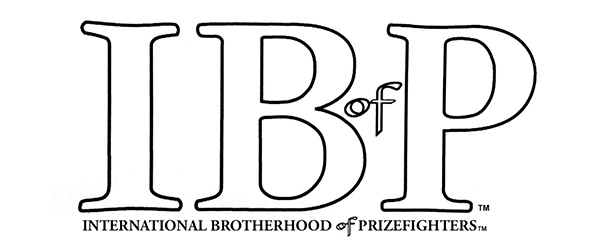Featured Articles
The Fifty Greatest Light-Heavyweights of All Time Part Five – Nos. 10-1

If I have given the impression that I have been a little disappointed in the depth of talent at light-heavyweight, those thoughts can now be banished. Here is a top ten that very nearly put itself together. Harold Johnson drew the short straw and washed up at #11 but him aside there were really no suitors for the top ten that are not ranked within it. Here be dragons.
So listen.
This, is how I have it:
#10 – MATTHEW SAAD MUHAMMAD (49-16-3)
It is both strange and surprising that Matthew Saad Muhammad, born Matt Franklin, has so few in the way of acolytes in this modern era. Muhammad, sometimes, seems to garner less admiration than that which he deserves, despite the fact that he has all the attributes necessary for a fighter to gather fans in excess of his standing.
He’s unquestionably world-class, and proved it against a huge array of talents and styles; he has one of the most compelling backstories in the entire history of boxing (Google if you aren’t familiar with it); and most importantly of all, he was one of the most exciting fighters of his, or any other era. He was like a huge Arturo Gatti with the crucial difference that he tended to hammer his top-ranked foes rather than be hammered by them.
His apprenticeship ended in March of 1977 with a loss to Eddie Mustafa Muhammad, after which he went on a tear through perhaps the most densely packed light-heavyweight division in history.
Matthew Saad Muhammad was matched tough early, and this, combined with either a learned strength drawn from the adversity he experienced in his tragic childhood or an innate toughness born of genetics, meant Muhammad was ready to engage in and emerge victorious from perhaps the most astonishing shootout ever captured on film. Marvin Johnson, a top fifty light-heavyweight in his own right, dug deep to close the class gap he suffered against Muhammad and turn their astonishing 1977 encounter into the most savage brawl ever seen at the weight. Muhammad triumphed after some of the most terrible exchanges in the history of filmed boxing, in the twelfth, leaving the all-but invincible Johnson staggering around the ring like a zombie. The two split just $5,000.
{youtube}UArIOikqodk{/youtube}
Their rematch early in 1979 was another good fight even if it did not quite reach the heights of their first. Muhammad stopped Johnson in eight to lift a light-heavyweight strap. A strap is all he would ever hold. Muhammad never lifted the lineal title, which lay dormant between the departure of Bob Foster and the arrival of Michael Spinks. But Muhammad was the most significant claimant of this time. In addition to Johnson he defeated the excellent Richie Kates in six and twice dispatched the superb Yaqui Lopez in two great fights in eleven and fourteen rounds. John Conteh managed to make the distance in one contest but was slaughtered in four in the rematch; four, too, was the limit for the fearsome Lottie Mwale. Between his 1977 defeat of Johnson and 1981 when the wars caught up with him and Dwight Muhammad Qawi stopped him in ten, he was almost as splendid a light-heavyweight as can be seen.
Almost.
Other top fifty light-heavyweights defeated: John Conteh (#29), Marvin Johnson (#27).
#09 – JIMMY BIVINS (86-25-1)
I’m sorry to play the same old tune but…the heavyweights got him.
In the summer of 1943, weighing 174.75lbs, Bivins was matched over fifteen rounds with the lethal Lloyd Marshall, 164.5lbs, for the duration light-heavyweight title, so named because titlists were able to hold their championship only for the duration of time that the champion – in this case, Gus Lesnevich – was in the armed forces. Marshall, as dangerous a fighter of his poundage as there ever was, and perhaps the best super-middleweight to emerge before that weight division, was coming off twin defeats of Anton Chistoforidis and Ezzard Charles and in the form of his life. Bivins was favoured but much credence was given to the rumours that the two had met in sparring some years earlier, a spar that ended when Bivins had to be rescued from Marshall’s tender attentions. It seemed history would repeat itself, as Marshall came out fast in pocketing the first three rounds, provoking a stern reaction from Bivins who dominated the next three; when Marshall dropped Bivins to take the seventh it seemed another corner had been turned, but Bivins picked himself up, shook himself down and won every remaining round up until the eleventh, which seemed a share. A tired Marshall succumbed to a series of lefts topped off with a vicious right to the cheekbone in the thirteenth.
Then Bivins headed north to the heavyweights, where I rank him at #40. His loss to the history of the light-heayweight division cannot be overstated. Bivins was one of the greatest, and head-to-head one of the most dangerous, light-heavyweights in history.
He was never beaten at the weight. A clutch of heavyweights defeated him while he was weighing in under 175lbs, but that does not concern us here. Anton Christoforidis bested him at middleweight – but in his prime years of 1941, 1942 and 1943, spent almost exclusively at and around the light-heavyweight limit, Bivins ran 14-0 against other light-heavyweights. The level of competition he bested was extraordinary.
In 1941, he defeated, among others, the great Teddy Yarosz, the deadly Curtis Sheppard and Nate Bolden. In 1942 he defeated former middleweight strapholder Billy Soose, reigning light-heavyweight champion Gus Lesnevich (in a non-title fight) and future champion Joey Maxim. In 1943, he dropped the legendary Ezzard Charles seven times on his way to a ten round decision victory; former champion Anton Christoforidis over fifteen rounds; and the deadly Marshall.
For those keeping score, that is a little better than a champion a year, more if you allow middleweight title claims. Bivins was a wrecking machine at 175lbs. He was monstrous.
He did great work at heavyweight too, but that work concentrated at the lighter poundage would have made one of the very greatest 175lb careers.
Of course the #9 slot is nothing to be sniffed at – but one of the many areas where light-heavyweight is marked different from heavyweight is the distinctive differences between the #3 slot and the #9 slot. Probably the former was not out with Jimmy’s grasp. The latter, he very much earned.
Other top fifty light-heavyweights defeated: Anton Christoforidis (48), Gus Lesnevich (39), Joey Maxim (33), Lloyd Marshall (18), Ezzard Charles, (Top Ten).
#8 BOB FOSTER (56-8-1)
A heavyweight a year beat the tar out of Bob Foster up until his 1965 dull but one-sided loss to Zora Folley. Earlier, thrashings at the hands of Ernie Terrell and Doug Jones convinced him, I think, that light-heavyweight was the division for him. The result was one of the greatest title-runs in light-heavyweight history.
This was despite the fact that champion Jose Torres was less than keen on meeting him in the ring. When middleweight legend Dick Tiger stepped up to light-heavyweight, Foster smelled his chance. Tiger had, as he saw it, been frozen out of the middleweight title picture before moving north and had the will and heart to step in with any man. When Tiger retained in a rematch with Torres and Foster blasted out the superb Eddie Cotton in just two rounds, the fight was imminent.
Foster summarised his stylings beautifully after his destruction of Cotton as “jab, jab, jab, then wham!” This sounds too basic to be true of a legitimate all-time great, but it is the essence of Foster’s strategy. Technically proficient without being a true technician, he was gifted with height and reach but took true advantage of neither, fighting in a strange crouched posture that undervalued his 6’3 frame. The point was, Foster wanted to make his opponents hittable. Whether that was through controlling them with his world-class jab to create openings or through initiating exchanges out of which he always – always – emerged victorious, making punching opportunities was the key to his style. This is because Foster is, perhaps, the hardest p4p puncher in the history of boxing.
That point is arguable, but it is also true that those arguments mean little. The truly great punchers are not survivable. Debating who was the more deadly puncher pound-for-pound between Bob Foster and Sam Langford is a little like arguing about what kind nuclear warhead will leave you more deceased. The handful of punchers that lie at the absolute top of the power tree hit people and those people fall asleep.
Tiger fell asleep when he put the title on the line against Foster. Tiger hadn’t been knocked out in ten years of title fights; Foster knocked him out completely. Unaware that he had visited the canvas Tiger spoke only of darkness and silence. The reign of terror had begun.
Foster’s level of competition is sometimes criticised and in this type of company you can understand why. It is true that his was not an era that provided great opposition, but interestingly there were granite chins in abundance. Chris Finnegan had been stopped before, on cuts – but the devastating one-two Foster laid him low with saw him counted out, lurching in the ropes, his brave attempt at Foster ending in a disaster for his brainstem. Frank DePaula was stopped just twice in his career, but Foster turned the trick in a single round with a crackling right uppercut. No softening his man up; no wearing his man down – when he lands, it’s over. Henry Hank lost thirty-one fights in his career but Foster was the only fighter able to stop him. Mark Tessman was stopped only once by concussion and that concussion was inflicted by Foster’s punches. “Punch resistance” was a meaningless phrase for any light-heavyweight that shared the ring with Foster. The only way to survive was to avoid being hit.
Foster lost to a 180lb Mauro Mina when he was 11-1. No other light-heavyweight defeated him. He was 15-0 in title fights. His reign lasted seven years. While Bivins and Muhammad defeated far and away the better opposition, Foster’s total dominance of the division and my sneaking suspicion that Foster would have poleaxed even those great men, sees him sneak in here ahead of both.
Other top fifty light-heavyweights defeated: None
#07 – JOHN HENRY LEWIS (97-10-4)
John Henry Lewis met Maxie Rosenbloom on four separate occasions and the end result was 2-2. But in the two matches that Lewis lost, the men weighed in as heavyweights; Lewis tipped the scale at 182 and 186lbs respectively. When these two elite light-heavies met nearer the light-heavyweight limit, there was only one winner and that was Lewis. What surprises here is that Maxie Rosenbloom was the light-heavyweight champion of the world for these two ten-round non-title meetings, and that John Henry Lewis was a teenager. In fact, he was still at high-school. It didn’t stop him dropping Rosenbloom with a right to the jaw in the first and a left to the kidney in the second in their second meeting in the summer of 1937. Dominating the incumbent champion and then dealing with school the very next day marked Lewis out as something special as he had always been marked out as something special. He first pulled on the gloves as a toddler. He turned professional as a middleweight aged just seventeen. And although he had to wait two years after first defeating Rosenbloom to get his hands on a world champion in a title fight, when he did so he didn’t miss that chance, out-pointing Bob Olin (who had taken the title from Rosenbloom a year earlier) over fifteen in October of 1935. Lewis had already beaten Olin; and Tony Shucco and Young Firpo and Lou Scozza and Rosenbloom. His resume, before he even came to the title, was excellent. Over the coming years he would turn it into something truly extraordinary.
His first defence was staged against #2 contender Jock McAvoy. Lewis, still just twenty-one years old, turned in a performance great maturity and ring-craft, jabbing and counter-punching his way to a decision booed by the crowd for its efficiency rather than any sense that McAvoy had been cheated. Len Harvey, the British and Commonwealth champion was next for a tilt at the title, but before travelling to London to master him, Lewis found the time to dust off Tony Shucco, Al Gainer and former strapholder Bob Godwin, his level of competition remaining outrageously high.
His next defence was a little softer, granting faded ex-champion Bob Olin the rematch he craved and putting him away in eight rounds. “He is the perfect boxer…the best boxer in the world,” Olin later said of his old foe. “He’s fast on his feet with full knowledge of all the scientific departments of the game.” Presumably Emilio Martinez would have agreed with him, succumbing in four rounds, before the perennially ranked Al Gainer pushed him harder over fifteen late in 1938. A late rally protected his title and ensured that he would retire the undefeated light-heavyweight champion of the world. Lewis didn’t just go unbeaten as champion though; he went undefeated at 175lbs. He was never beaten in a match made within 5lbs of the light-heavyweight limit. He was invincible there, dominating a tough era with speedy boxing, a superb left hand and an innate toughness that was only ever beaten from him by heavyweight champion Joe Louis, who stopped him for the first and only time in his career in 1939. Lewis retired shortly thereafter, his eyesight failing him.
One imagines the division let out a collective sigh of relief. Lewis had terrorised it.
Other top fifty light-heavyweights defeated: Al Gainer (#38), Tiger Jack Fox (#25), Maxie Rosenbloom (#15)
#06 – TOMMY LOUGHRAN (90-25-10; Newspaper Decisions 32-7-3)
A thread has run through this series on the greatest 175lb fighters of all time and that thread is my regular disagreement with history. Whether it’s Sam Langford, the great men of the pre 175lb era generally counted lightheavies by traditionalists or the thorny issues of Billy Conn and Battling Levinsky, I’ve found myself on the rough side of apparent historical truth on numerous occasions. Here, at the sharpest of sharp ends, my trickle of truth finds its way to history’s raging torrent. I add my modest voice to a chorus of more famous names in saying:
Tommy Loughran was one of the greatest pugilists of all time.
Nat Fleischer ranks him at #4, all time, as did legendary boxing man Charley Rose; the IBRO ranks him #6. He appeared at #6, too, on Boxing Scene’s top twenty-five and that is where he is ranked here. This kind of greatness lies on a distant shore and Loughran inarguably belongs there. Simply put, it is impossible to have a list of ten light-heavyweights without placing Loughran somewhere upon it. He was that special, and he proved it.
He proved it first with his record of note standing at just nineteen years old when he was slung in against the immortal Harry Greb. Loughran lost, inevitably, over eight rounds but he won admirers in doing so and impressed with his performance in the opening two rounds and in a sudden desperate rally in the last. He even managed to cut Greb, who spoke in glowing terms of the prospect.
So Loughran matched Gene Tunney.
Again, he did so over eight rounds in a fight generally held to be a draw in 2015. “Not many boxers could outbox Tunney at this stage of his career,” wrote Tunney biographer Jack Cavanaugh. “But Loughran was one of them.”
This statement is far from inarguable but it bears examination. Tunney was one of the very best boxers of his era and is regarded to this day as one of the finest boxers of all time; Loughran, on the other hand, was a teenager. But he was a teenager with perhaps the most cultured, brilliant left hand in history. I’ll say that again: it is possible that the fighter blessed with a better left than Tommy Loughran is yet to be born.
Whatever the details it is a fact that once Loughran made it out of his teens and into his prime, Gene Tunney took nothing more to do with Tommy Loughran. One man who never shirked a challenge, however, was Harry Greb. Loughran fought Greb on a further four occasions, going 1-1-2, defeating him over ten rounds in October of 1923 in a rough contest from which Loughran emerged with the decision via a stern and consistent body-attack.
Most of the other luminaries of the era fell to him too, including Mike McTigue (from whom he took the light-heavyweight title), Jimmy Delaney, Georges Carpantier, Jimmy Slattery, Young Stribling, Leo Lomski, Pete Latzo, Jim Braddock, at which point, as the reader will be unsurprised to hear, the heavyweights got him.
But not before Loughran had staged the fifth of his six victorious world-title fights against Mickey Walker. This was not just a special fight because Walker was so outstanding but also because readily available film survives. Walker, a nightmare for boxers even up at heavyweight, was handled by Loughran. Mickey’s strategy against his timeless jab was to dip and bulldoze but Loughran just tucks his right hand in behind the former middleweight champion’s elbow, adding a superb body attack to his effortless outside game. So successful is this strategy that Loughran begins to feint with the jab to open up the body, and soon Mickey is moving back; Loughran adjusts, re-arranges his jab, throws it, and opens up Mickey’s body again.
Loughran has no qualms about holding Walker while he hits him, he was no saint, but when Walker dips and lifts driving his head into Loughran’s, chin he makes no complaints. He was a shotgun stylist, a renaissance painter who made art with a surgeon’s blade.
Let’s meet the men who keep him from the top five.
Other top fifty light-heavyweights defeated: Mickey Walker (#36), Jimmy Slattery (#34), Young Stribling (#23), Jimmy Delaney (#14), Harry Greb (Top 10).
#05 – MICHAEL SPINKS (31-1)
As I wrote in Part Four, when contenders passed Dwight Muhammad Qawi they did so on tiptoe, and holding their breath. He was a monster. Two months before Spinks was to take to the ring with this monster, his common-law wife and the mother of his young daughter was killed in a car accident. Just days before the fight he wept openly in front of members of the press – and on the night of the fight?
Nothing.
No glimmer of emotion. Here was a man in absolute control of himself, a professional.
“I live the life of a fighter. I program myself as a fighter.”
Spinks assumed absolute control in the ring, and when his control was challenged he had the tools to equalise the situation with extreme prejudice. Marvin Johnson challenged him, as Marvin Johnson was wont to do, in March of 1981, directly attacking Spinks, and arguably winning all three of the opening rounds in doing so. Spinks backed up, appraised his man, and then delivered an uppercut so brutal that Johnson was unable to continue in its wake. This is the same Marvin Johnson, it should be remembered, that Matthew Saad Muhammad was unable to lay low with three dozen flush power-punches.
So Spinks could be as destructive as he was brilliant, and he was certainly brilliant. When he got to the ring containing Qawi in March of 1983, at stake, the lineal light-heavyweight championship of the world, not only did he show no fear but he showed that brilliance. He dominated Qawi with his jab, and if that brutal sawn-off shotgun of a fighter had his successes against Spinks, there was only one winner. From distance he crackled jabs around Qawi’s head, and when Qawi drew close he found clubbing right hands from an elevated position and a guard-splitting uppercut that snapped the smaller man’s head back repeatedly.
But most of all he controlled Qawi, he forced Qawi to fight his fight, he forced Qawi to jab with him by making himself unavailable for other punches, with cunning, beautifully judged distancing. Malleable in the extreme, his style appeared to be that of a technician, but he had a disjointed approach to building momentum that left rhythm-breakers useless and made learned skills of no practical value to a certain kind of fighter. There are few clues as to what Spinks will throw next.
This occasionally made opponents cautious and led to boring matches where Spinks neglected to take unnecessary chances and his opponents neglect to take any. But he was as capable of the explosive and unexpected as he was of the prosaic.
He staged four defences of the lineal title he finessed and clubbed from Qawi before abandoning it for the heavyweight division, undefeated at 175lbs. There is no company in which Spinks need bow his head – there are other light-heavyweights in his class, but none in excess of it. In some imaginary light-heavyweight maelstrom of greatness, a division made up of the top ten described here, he would excel – if I were betting a single coin on who would emerge as the champion, I might just put it on Spinks.
Other top fifty light-heavyweights defeated: Dwight Muhammad Qawi (#21), Marvin Johnson (#27), Eddie Mustafa Muhammad (#32).
#04 – GENE TUNNEY (65-1-1; Newspaper Decisions 14-0-3)
I’m not convinced, entirely, that Gene Tunney belongs above the likes of Michael Spinks and Tommy Loughran. What tipped the balance in the end is their respective paper records. Loughran slipped up a few times. Tunney was defeated just once.
And that defeat could hardly be deemed “a slip up.” Tunney lost to Harry Greb, past his absolute prime but still phenomenally dangerous and on the night of the first of five meetings between the two, Greb thrashed Tunney as brutally as he ever thrashed any man; both boxers and the referee finished the contest covered in Tunney’s blood.
The blood was not blue. Tunney’s beginnings were typically working class. But he would raise himself, partly through boxing, all the way to the summit of what passed for American aristocracy, the walking embodiment of the American Dream. Tunney knew that what the US loved most was a winner – this meant that Tunney had to find a way to do the seemingly impossible: he had to find a way to defeat Harry Greb.
He got his first chance to do so nine months later in Madison Square Garden, the site of his ritual slaughter in the first fight, and the officials thought he did enough – Tunney was awarded a split decision victory over fifteen rounds. The result remains one of the most controversial in boxing history. One time trainer of the legendary John Sullivan and the first chairman of the New York State Athletic Commission William Muldoon named the decision “unjustifiable.” Of twenty-three newspapermen polled at ringside, only four found for Tunney; the New York herald went further than many naming the decision “the most outrageous ever awarded in New York.” It is arguable that Tunney did not, then, achieve an unfettered victory in the first rematch, but in the second rematch, their third fight, at the end of 1923, Tunney achieved victory. In September of 1924 the two boxed a draw in their fourth and final fight at the light-heavyweight limit.
Tunney was a Rolls-Royce of a fighter, beautifully balanced with an exquisite left, a digging right (he scored a sizeable number of knockouts with that punch at the weight), he was a solid body-puncher and a world-class counter-puncher. It was a combination that saw him defeat every light-heavyweight he ever met, bar none, Leo Houck, Battling Levinsky, Fay Kesier, Jimmy Delaney and Georges Carpantier among them.
Other top fifty light-heavyweights defeated: Battling Levinsky (#27), Jimmy Delaney (#14), Harry Greb (Top 10).
#03 – HARRY GREB (107-8-3; Newspaper Decisions 155-9-15)
I suspect that Harry Greb’s high placement above, even, Gene Tunney, may cause some consternation among readers. The internet is awash with accounts of his thousand-glove attack and his supernatural speed, so allow me, instead, to take a purely statistical approach in defence of Greb’s placement.
There are forty-nine other men listed on this top fifty at 175lbs. Greb beat ten of them. In other words, he defeated 20% of the men on this list – nobody, nobody listed above and nobody listed below come anywhere near this statistically. Nor is it the case that Greb cornered past or pre-prime versions of these men. On the contrary, he fought, for the most part, series with each of them over the course of their careers. He gave Jack Dillon two chances at him, beating him firmly the first time and thrashing him the second; Jack Delaney got a second chance but ran 2-0; Tommy Loughran, who shared Greb’s prime, was rewarded with five shots at the great man and for the most part he was beaten firmly. Battling Levinsky received no fewer than six shots at Greb, mostly in no decision contests and in every one of them the newspapermen in attendance favoured the Pittsburgh man. Harry Greb may have been the most dominant fighter in history, and he did a huge swathe of his best work at light-heavyweight.
As for his losses at 175lbs, despite meeting the highest level of competition of any light-heavyweight in history, they were few and far between and often inflicted in what may politely be referred to as “circumstances.” He met the deadly Kid Norfolk on two occasions, getting the best of him first time around only to find himself disqualified in a second contest marred by brutal fouling by both men – eye-witness accounts almost universally decry the disqualifying of Greb but not Norfolk as ridiculous. As we have seen, Gene Tunney holds a legitimate victory over him, winning their December 1923 contest by most sources, but his victory from February of that year is disputed.
Greb twice defeated Tommy Gibbons within the 175lbs limit, but did also drop a decision to him; Loughran managed to win one out of six against “The Pittsburgh Windmill.” He has three legitimate losses at the weight all against all-time greats listed in the top twelve here, men who he also defeated. In total, he holds wins against seven men from the top twenty.
What is disturbing about Greb’s body of work at 175lbs is that even if you removed for some obscure reason his five most significant wins, he would still be bound to the top twenty by his resume, which would very probably remain superior to that of Matthew Saad Muhammad or Roy Jones. Small for a light-heavyweight and famously a fighter of whom no film appears to have survived, his head-to-head ability is inferred by his overwhelmingly positive results against all-time greats, including those of a very modern appearance, like Tommy Loughran and Tommy Gibbons.
Rather than questioning whether or not Greb belongs in the top three, I submit that his absence from the top two is a better cause for curiosity.
Other top fifty light-heavyweights defeated: Billy Miske (#44), Jimmy Slattery (#34), Battling Levinsky (#27), Kid Norfolk (#20), Jack Dillon (#19), Maxie Rosenbloom (#15), Jimmy Delaney (#14), Tommy Gibbons (#12), Tommy Loughran (Top Ten), Gene Tunney (Top Ten).
#02 – ARCHIE MOORE (185-23-10)
There’s a two-pronged response to the question as to Greb’s placement outside the top two, and the first part of that answer is “Ancient” Archie Moore, the Mongoose. Of course, he wasn’t always ancient but Moore served his lengthy and extreme apprenticeship in the middleweight division before dual losses to the legendary Charley Burley and the mercurial Eddie Booker sent him scampering north to the light-heavyweight division aged twenty-eight. Holman Williams, one of the true monsters of the Murderer’s Row that haunted Moore, elected to follow him and took from him the narrowest of decisions; Moore showed the determination that would carry him to the absolute outer reaches of what is possible for a fighting man in re-matching Williams and becoming only the second man to score a stoppage over one of the best pure-boxers of that or any other era. Moore, as we recognise him today, had arrived.
He became the second man, too, to score a knockout over Jack Chase, another shadowy destroyer from the absurd depths of the middleweight division that now lay below him, defeated Billy Smith, the monster who dispatched Harold Johnson with a single punch – Moore’s own domination of the great Johnson began shortly thereafter. There were disasters, too – the one round knockout loss to Leonard Morrow, although avenged, is hurtful and there were DQ losses that leads one to question what would become one of the great ring temperaments, but it is a fact that Moore had yet to summit at 175lbs. Arguments about whether or not he would actually improve as a fighter are for another day, but what is inarguable fact is that Moore did not come to the light-heavyweight title until late 1952. He was thirty-six years old.
The key, I think, to Moore’s emergence from a pack of fighters to whom he did not prove his inherent superiority (Charley Burley, Holman Williams, Jack Chase, et al) was his ability, perhaps unparalleled, to mount campaigns at heavyweight and light-heavyweight simultaneously. From almost the moment he stepped up to light-heavy he was making matches, too, north of that weight. Moore was using the heavyweights as a tool, I suspect, to enhance his standing as a light-heavyweight, as well as one by which to procure cash.
Whatever the details, his strategy worked and once Moore finally succeeded in getting his opponent into the ring he did not let him off the hook. Maxim fought with astonishing heart, but it is likely that the only round he won was the fourth, awarded to him by the referee after Moore landed a low-blow. That low blow aside, it was a perfect performance and one of the best title-winning efforts on film. Down the years Moore has somehow become perceived by many as a counter-puncher, a fighter who fought in a shell rather like James Toney, waiting for and then pouncing upon chances created by his opponent’s mistakes. Nothing could be further from the truth. Moore was aggressive, marauding but never cavalier. Maxim, easy to hit but hard to hit clean, was just target practice for the Mongoose. He found the gaps that represented half-chances for other fights and made fulsome opportunities of them. His left hook, as short a punch of its kind as can be seen, became a cover for his step in, an industrial elevator of a punch starting at the hip and terminating – well, anywhere, in a singular swift motion. His sneak right which in the first round was a clipping, careful punch, was, by the end of the fight, a steaming dynamo of a punch and one that left the granite-chinned Maxim reeling. Inside, Moore dominated with sniping uppercuts and a savage two-handed body-attack.
By the end, Maxim was desperate. Chewed upon the inside, stiffened by winging punches on the outside, it is great testimony to his heart that he survived the championship rounds. The reign of the greatest ever light-heavyweight champion had begun.
His reign lasted nine years and spanned ten title fights in which Moore went 10-0. These included his astonishing defeat of Yvon Durelle in which he was battered to the canvas three times in the first round and once more in the fifth; of course he survived, of course he stopped Durelle in the eleventh – he had the heart of a lion and the soul of an antique lighthouse. He was in his forty-fourth year. At the time of his final defence against Giulio Rinaldi, he was in his forty-sixth. Moore did not carry out this miracle, like the astonishing Bernard Hopkins, in an era of universal healthcare for fighters who went out twice a year. He did it in an era during which African-American pugilists spent the night before their latest fight in the barn-loft of a local promoter and went out nine times in a year, as Moore did in 1945.
His astounding longevity in tandem with the greatest reign in light-heavyweight history has him near the very pinnacle of this list. All that keeps him from the #1 spot is his very own demon.
Other top fifty light-heavyweights defeated: Joey Maxim (#33), Lloyd Marshall (#17), Harold Johnson (#11), Jimmy Bivins (Top Ten).
#01 – EZZARD CHARLES (95-25-1)
Moore didn’t like to talk about Ezzard Charles. He loved to talk about Charley Burley. He often expressed his admiration for Rocky Marciano and Eddie Booker and his dislike of Jimmy Bivins. But he did not talk much about Ezzard Charles.
Telling ghost stories is no fun if you live in a haunted house.
The two met first in the spring of 1946 in a fight which was not particularly competitive. Charles was so much better than Moore that referee Ernie Sesto scored the fight ten rounds to zero in Ezzard’s favour; each of the judges found a single round for the Mongoose. It was skill that did it that night and a jab that Moore must have found himself trying to slip in his sleep.
Almost a year to the day after their first meeting they clashed again. Between their first and second meeting they had defeated, between them, Billy Smith, Jack Chase, Jimmy Bivins, Lloyd Marshall and a clutch of other decent fighters. They were untouchable, but to one another. The rematch was closer, so close that Moore could almost touch the win but the result was a majority decision loss, one judge favouring the draw. The deciding factor was likely a single punch, a left hook to the body which dropped Moore in the seventh and caused him to stall thereafter.
Moore was a giant of a fighter but nothing beat larger or stronger within him than his heart. Inevitably he would seek out a third shot at Charles and inevitably Charles would accommodate him. Here was Moore’s moment and he was determined not to let it slip. He began cautiously, boxing defensively, leading at the beginning of the eighth in the main because Charles had two rounds taken from him due to borderline low-blows, but in that fatal three minutes, he opened up in earnest. He jabbed to Ezzard’s mouth and Charles began to bleed. He whipped over that sneaky left hook to Ezzard’s ear and Charles was staggered. That crackling right-hand whipped through and Ezzard was staggered again.
On the cusp of defeat, Charles rescued himself and sealed his greatness forever. Some will even tell you that what followed was nothing less than the springing of a trap that called for him first to be hit and hurt. The two piece that he landed in desperate retort began with a left hook to the temple but the right-hand that followed was described by Pittsburgh journalist Harry Keck as “seeming to travel a complete circle” before it cracked home on Archie’s chin. It was a punch that Moore later claimed he had not seen, and knew nothing of, except darkness.
So there he stands, Ezzard Charles, close to darkness himself, wide-eyed over the quivering form of a detonated nervous system that will in a matter of moments belong again to Archie Moore, unassailable in his greatness. Three times Moore stepped to him and three times Charles defeated him. In the second and third confrontations this difference was arguably a single punch, the fine line between #1 and #2, no more and no less than that.
For despite Moore’s incredible age-defying title reign, he cannot be placed here above Charles. Imagine for a second what it would mean for Joe Louis had he three times defeated Muhammad Ali. There would be no more arguments about which of these two belongs at the top of the heavyweight tree. It is true that Charles did not achieve all that Moore did in the light-heavyweight division. In the aftermath of his knockout of Moore he was labelled a certainty to receive a title shot but Lesnevich, naturally, ducked. In a sense he can hardly be blamed. The single fight film to have emerged of the light-heavyweight Charles is terrifying. Fast, poised, deadly, with a body attack even more savage than Moore he appears unboxable. A fighter as special as Lloyd Marshall seems a boy to a man.
So inevitably, the heavyweights beckoned for the denied light-heavyweight contender and he excelled there too becoming the heavyweight champion of the world, but not before he had defeated, mostly in a dominant fashion, the great names amassed in the greatest light-heavyweight division, including Teddy Yarosz, former middleweight titlist Ken Overlin, light-heavyweight champion Joey Maxim, light-heavyweight champion Anton Christoforidis, the legendary Lloyd Marshall, Jimmy Bivins, Oakland Billy Smith and a swathe of other contenders.
He did not show the spooky longevity of Moore and nor was he permitted to lay a claim to the light-heavyweight title so many great men would throw aloft before and after him, but he did prove beyond all hope of contradiction his inarguable superiority to Archie Moore. This, in tandem with the other fighters he laid low at the weight, is enough to make him the greatest exponent of the fistic art ever to weigh in at 175lbs.
For those of you who have taken the time to read this series of articles from the first word to the last: I thank you.
Other top fifty light-heavyweights defeated: Anton Christoforidis (#48), Joey Maxin (#33), Llloyd Marshall (#17), Jimmy Bivins (Top Ten), Archie Moore (Top Ten).
Featured Articles
Luis Nery is Devoured by a Monster in Tokyo: Naoya Inoue KO 6
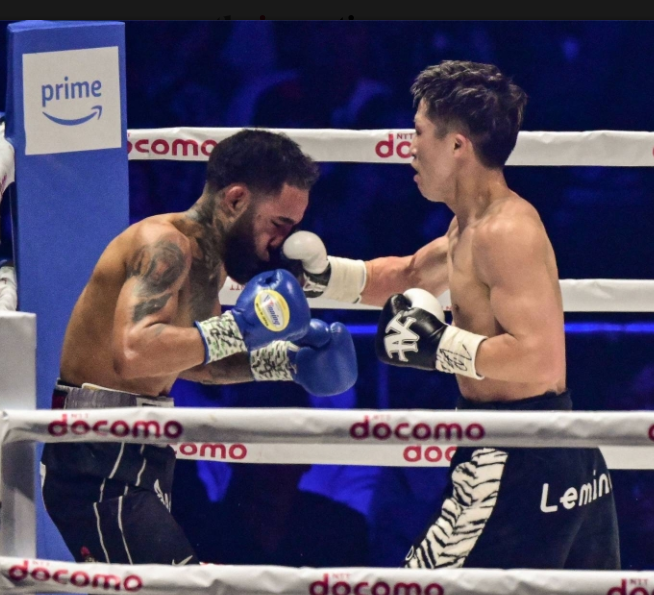
In March of 1988, three days after the official opening of the Tokyo Dome, Mike Tyson christened the arena for boxing with a second-round stoppage of Tony Tubbs. The announced attendance, 51,000, was a record for a boxing match in Japan that would stand for 36 years. A multitude somewhat larger (the exact tally isn’t yet official) was on hand today to witness their hero Naoya “Monster” Inoue get off the deck to humble Tijuana import Luis Nery.
A former two-division world title-holder, Nery stunned the faithful in the second minute of the opening round when he put Inoue on the canvas with a sweeping left hook. It was the first time that the ‘Monster’ had ever been knocked down and (shades of Tyson-Douglas!) it appeared for a moment that another monster upset was brewing in the building that locals fondly call the Big Egg. But Inoue returned the favor in round two when he caught the lunging Nery off-balance and put him down with a sharp left hook and was in control of the fight from that point on.
Inoue produced a second knockdown in round five with a short left hook and closed the show in the following round with a vicious right hand that snapped Nery’s head back and splattered him against the ropes. Referee Michael Griffin waived it off without a count. The official time was 1:22.
Inoue, who won his first pro title in his sixth pro fight, improved to 27-0 (24 KOs) while successfully defending his unified 122-pound title. It was his eighth straight win inside the distance, a run that began with a seventh-round stoppage of Jason Moloney at the MGM Bubble in Las Vegas. Luis Nery, who lost for only the second time in 37 fights, was 2-0 in previous visits to Japan, stopping Shinsuke Yamanaka twice, the second KO of which rucked Yamanaka off into retirement and established Nery’s reputation as a bully.
There were three other world title fights on the card, all of which went the full 12 rounds.
In a mild upset, Yokohama southpaw Yoshiki Takao won a world title in his ninth pro fight, overcoming Australia’s Jason Moloney (27-3) to capture the WBA bantamweight belt. Moloney mustered a big rally in the final round but couldn’t seal the deal. There were no knockdowns but Takao had a point deducted in round two for low blows. The scores were 117-110 and 116-111 twice.
Takuma Inoue, Naoya’s younger brother, successfully defended his WBA world bantamweight title in his second title defense with a unanimous decision over Osaka’s Sho Ishida (34-4). Takuma, who improved to 20-1, is a good technician but with only five stoppages to his credit, lacks the firepower of his celebrated brother.
In a rematch, WBA super flyweight title-holder Seigo Yuri Akui scored a unanimous decision over countryman Taku Kuwahara. The scores were 118-110 and 117-111 twice.
Akui (20-2-1) was making the first defense of the title he won in January with an upset of long-reigning title-holder Artem Dalakian. In their previous meeting at adjacent Korakuen Hall, Akui saddled Kuwahara (13-2) with his first defeat, scoring a 10th-round stoppage.
To comment on this story in the Fight Forum CLICK HERE
Featured Articles
Canelo Alvarez Turns Away Jaime Munguia to Remain Undisputed King at 168
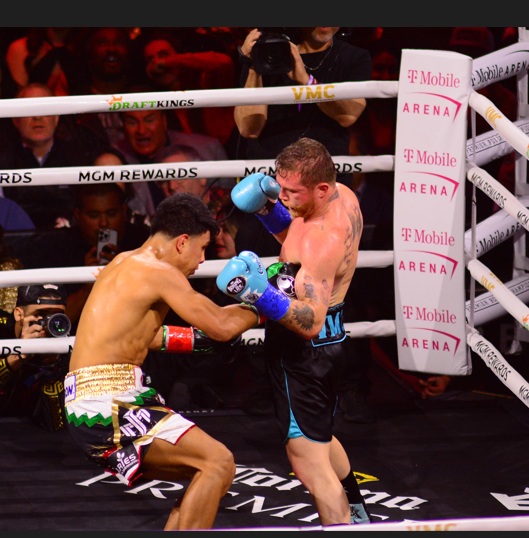
Saul “Canelo” Alvarez remains Mexico’s top fighter and the undisputed super middleweight world champion with a resounding victory by unanimous decision over the hard-charging Jaime Munguia on Saturday.
If Mexico had a monarchy Alvarez would be king.
“I am the best Mexican fighter,” said Alvarez.
An announced crowd of 17,492 saw Guadalajara’s Alvarez (61-2-2, 39 KOs) patiently analyze the battle plan of Tijuana’s Munguia’s (43-1, 34 KOs) and then unravel it methodically every round at the T-Mobile Arena in Las Vegas.
It was a battle for Mexico that pitted two dangerous fighters with Munguia entering the prize ring undefeated and hungry to establish himself as Mexico’s new power. He just wasn’t ready.
After Munguia opened up quickly behind a solid jab and combinations, Alvarez calmly blocked and parried the Tijuana fighter’s attacks for three rounds and then it happened.
After success in the first three rounds Munguia opened up with another attack in the fourth that Alvarez calmly timed and snapped a right uppercut to the chin that floored the Tijuana fighter for the first time in his career. He got up from the knockdown and was able to stave off a further Canelo attack.
The momentum suddenly changed and for good.
Alvarez stalked Munguia every round with a more aggressive approach and sometimes set traps for counters. Though the Mexican redhead found success he was unable to floor the taller Munguia again. But he did come close including the seventh when a left hook to the body visibly hurt Munguia. He survived.
It must have been frustrating for Munguia whose improvement in his boxing skills have been noticeable in his last three fights. Even in this fight his ability to defend and return fire against Canelo’s clever moves was a vast improvement over his career three years ago. But its not enough when battling one of the best fighters pound-for- pound in the world.
Four-division world champion Alvarez strategically proved his skills are another level that only a few today possess. It was a valuable lesson for Munguia to learn the same lesson Canelo received against Floyd Mayweather a decade ago.
Experience counts.
“He’s a fighter with a lot of experience,” said Munguia who had hoped his youth and stamina would help against the 33-year-old Alvarez.
Canelo said Munguia was a great fighter and very strong.
“I take my time,” said Alvarez “He’s strong but a little slow I saw every punch.”
Though it was the fifth consecutive fight without a knockout, Alvarez was satisfied with the unanimous decision to keep the WBO, WBA, WBC and IBF super middleweight titles. It was the first time two Mexican super middleweights fought for all the titles.
Alvarez said this win again proves he can fight whoever he chooses after fighting boxing greats like Miguel Cotto, Mayweather and other champions.
“I can do whatever I want to do,” said Alvarez.
Other Bouts
Mario Barrios (29-2, 18 KOs) floored Fabian Maidana (22-3, 16 KOs) in the third round but found the hard-punching Argentine too tough to finish off. Instead, he used a steady stream of jabs to win by unanimous decision after 12 rounds.
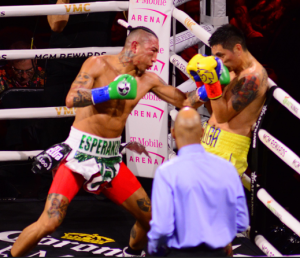
A touch left followed by a rifle right cross dropped Maidana. Instead of giving up, the younger brother of the great Marcos Maidana unleashed his own big blows to force Barrios into a more careful strategic fight mode. Especially after one or two blows caused a swelling on his right eye.
But Maidana never could find the antidote for Barrios’s jab that won the majority of the rounds for the San Antonio, Texas fighter. After 12 rounds all three judges scored it 116-111 for Barrios who keeps the interim welterweight title.
After a sluggish start, Brandon Figueroa (25-1-1, 19 KOs) found his footing midway through the super bantamweight match against Jesse Magdaleno (29-3, 18 KOs) and ended the match with a one-punch belt to the body to win the battle of former champions.
Magdaleno took the lead in the fight with clever boxing but slowly Figueroa cranked up his punch out-put and while during a furious exchange the fighter from Weslaco, Texas connected with a left to the body. Magdaleno could not beat the count at 2:59 of the ninth round.
Figueroa retains the interim super bantamweight title.
Eimantas Stanionis (15-0, 9 KOs) used a power jab to separate from Venezuela’s Gabriel Maestre (6-1-1, 5 KOs) to retain the WBA welterweight world title by unanimous decision.
Despite two years from a ring appearance, Stanionis was able to out-work Maestre, a 37-year-old who was fighting for his first world title. Both had faced each other years ago as amateurs.
No knockdowns were scored but the fast-paced fight was won by the busier Stanionis whose jab was his primary weapon. All three scores favored the Lithuanian fighter 117-111, 118-110, 119-109.
Photo credit: Al Applerose
To comment on this story in the Fight Forum CLICK HERE
Featured Articles
Mielnicki, Ramos and Scull Victorious on Cinco de Mayo Weekend in Las Vegas
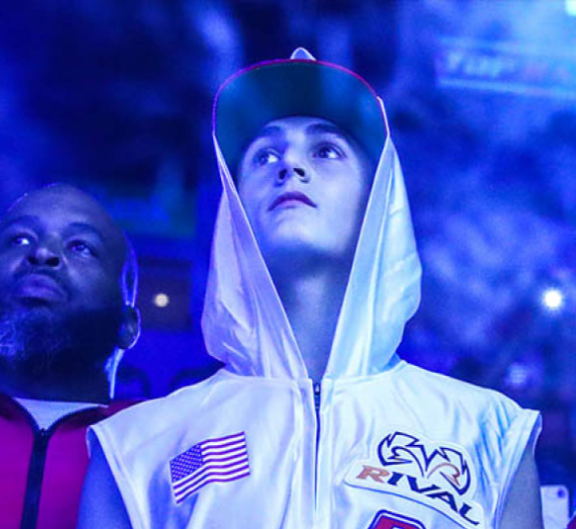
Two 10-round junior middleweight prelims aired as teasers for tonight’s four-fight pay-per-view at the T-Mobile Arena in Las Vegas. In the opener; New Jersey’s Vito Mielnicki Jr (pictured) scored his tenth straight win, advancing to 18-1 (12) with a wide decision over SoCal’s Ronald Cruz. Mielnicki, 21, put Cruz on the canvas in round three and again in round four, but So Cal’s Cruz (19-4-1) stayed the course and maintained his distinction of never being stopped. The judges had it 99-89, 98-90, and 96-92 for “White Magic” who had the noted trainer Ronnie Shields in his corner.
In the second bout – the main go of the prelims, so to speak – 23-year-old Arizona southpaw Jesus Ramos rebounded from his first loss (a narrow defeat to Erickson Lubin in this same ring) with a ninth-round stoppage of Johan Gonzalez who was making his third start in the U.S., having fought mostly in Venezuela and Panama.
Gonzalez was rugged, but his record heading in (34-2 with 33 KOs) was deceptive as he was out-classed by Ramos (21-1, 17 KOs) who was credited with landing roughly twice as many punches before he brought the bout to a conclusion. A counter left hook put Gonzalez down hard. He beat the count, but Ramos swarmed after him, rocking him with punches. There were only 5 seconds remining in the ninth frame when referee Harvey Dock waived it off. Gonzalez protested, but it was the right call.
Also
Super middleweight William Scull made his U.S. debut in an 8-round fight. A native of Cuba who had been living in Germany and now hangs his hat in Argentina, Scull, 31, scored a knockdown in the fifth round en route to winning a unanimous decision over New Orleans’ Sean Hemphill (16-2).
Scull is ranked #1 by the IBF, but you won’t find his name in the Top 15 of the other three major sanctioning bodies. Does the obscure William Scull have Canelo Alvarez in his future?
In another undercard bout of note, Mexico City super bantamweight Alan Picasso improved to 28-0-1 (16 KOs) with a fifth-round stoppage of Colorado’s Damien Vazquez (17-4-1). Picasso, 23, is ranked #2 at 122 by the WBC.
Check back later as TSS West Coast bureau chief David Avila weighs in with a recap of the Canelo-Munguia fight and the three fights preceding it. The bouts are available for purchase on multiple pay-per-view platforms: e.g. Prime, DAZN, and PPV.com.
To comment on this story in the Fight Forum CLICK HERE
-
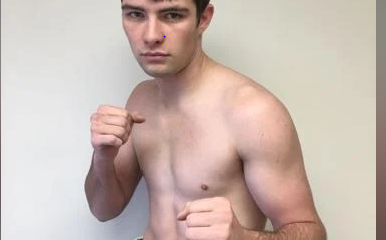
 Featured Articles3 weeks ago
Featured Articles3 weeks agoIn a Massive Upset, Dakota Linger TKOs Kurt Scoby on a Friday Night in Atlanta
-
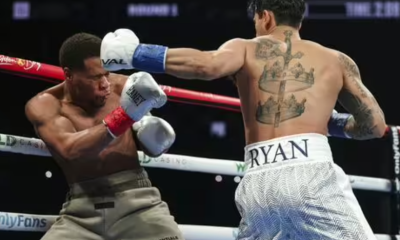
 Featured Articles2 weeks ago
Featured Articles2 weeks agoIn a Shocker, Ryan Garcia Confounds the Experts and Upsets Devin Haney
-
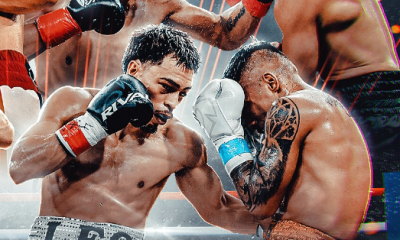
 Featured Articles4 weeks ago
Featured Articles4 weeks agoResurgent Angelo Leo Turns Away Eduardo Baez on a Wednesday Night in Florida
-
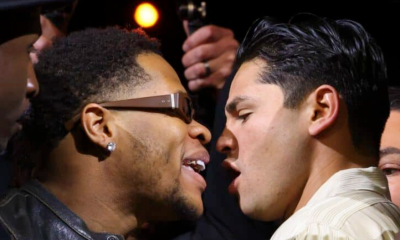
 Featured Articles3 weeks ago
Featured Articles3 weeks agoAvila Perspective, Chap. 281: The Devin Haney and Ryan Garcia Show
-
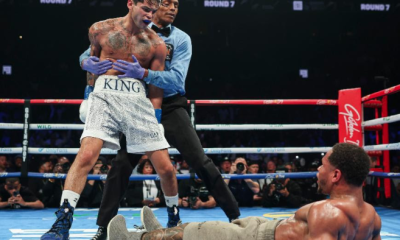
 Featured Articles2 weeks ago
Featured Articles2 weeks agoHaney-Garcia Redux with the Focus on Harvey Dock
-
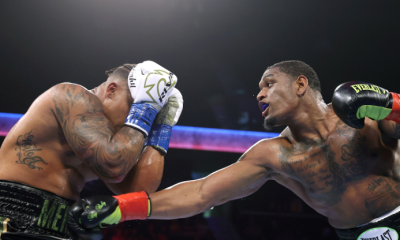
 Featured Articles3 weeks ago
Featured Articles3 weeks agoAnderson Cruises by Vapid Merhy and Ajagba edges Vianello in Texas
-
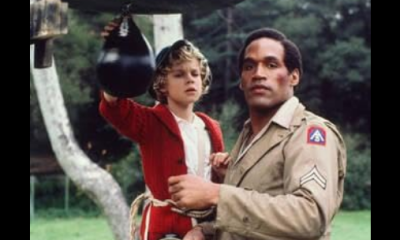
 Featured Articles4 weeks ago
Featured Articles4 weeks agoO.J. Simpson the Boxer: A Heartwarming Tale for the Whole Family
-
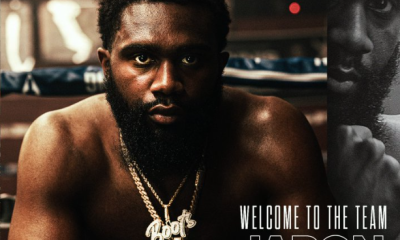
 Featured Articles4 weeks ago
Featured Articles4 weeks agoAvila Perspective, Chap. 280: Matchroom Snatches ‘Boots’ Ennis and More

